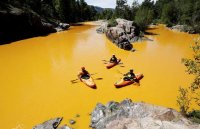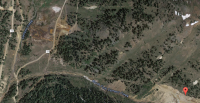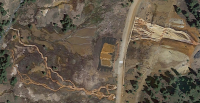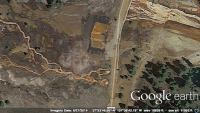The Utah Department of Health (DOH) reviewed DEQ’s data collected on August 10, 2015 and prepared a
Statement of Evaluation for these data.
The data showed that for public use, six contaminants exceeded screening values: aluminum, arsenic,
barium, iron, lead, and manganese. For each contaminant identified above the screening level, a 95 percent upper confidence limit (95% UCL) was calculated. This value represents with 95 percent confidence that it is above the true average concentration for the contaminant in the environment that is being sampled and more accurately depicts what a person will come into contact with rather than simply using a simple average or a maximum value.
After calculating the 95% UCL, this value is compared to the health-based screening values. If it falls below the screening value, no further exposure investigation is warranted. For this data set, the 95% UCL for barium fell below screening levels and was not evaluated further.
The five remaining contaminants that exceeded screening levels were evaluated for recreational exposures. DOH defines a standard recreational exposure as 60 days of exposure per year for two hours a day. It considers skin contact and accidental ingestion of river waters during recreation of 50 mL per hour.
None of the contaminants exceeded screening values for agricultural use.
Based on these data, DOH does not expect that recreational or agricultural use of the San Juan River will result in adverse effects in people, livestock, or crops. It is still recommended that recreational users carry their own drinking water and not rely on filtering or purifying river waters. Further evaluations and updated findings will be provided as new data become available.
Long-term Impacts
DEQ scientists are evaluating the potential long-term risk to Utah’s waters from the release of more than two million pounds of toxic metals into the Animas River. A number of factors mitigate the effects of the spill in Utah, and these factors help explain why the levels of metals in Utah have been difficult to link directly to the spill:
- The underlying chemistry in western streams creates conditions that cause most metals to settle from the water or otherwise be retained upstream. The chemical environment of these rivers should cause iron—about 85 percent of the metals that were released in the spill—to settle relatively quickly.
- Alkaline conditions in the Animas and San Juan Rivers and the large quantities of sediment that move through these systems mean the metals are likely to remain attached to particles and not pose acute risks to aquatic life or people.
- The total volume of water released constitutes less than 1 percent of the daily flow in the San Juan River. The relative threat of exposure to toxic metals diminishes as these metals become diluted and dispersed in the water.
- The higher flows in the San Juan River, due to the size of the river and intentional releases from Navajo Dam following the mine discharge, should help reduce exposure to the toxins released from the Gold King Mine. Recent storms in southern Utah further reduced any immediate threats.
- The San Juan River carries large amounts of sediment downstream, which should help bury any metals that make it to Lake Powell, minimizing the potential for these substances to negatively affect the fish and other wildlife that use the lake.
Once these metals have settled, DEQ will begin evaluating the long-term impacts to Utah’s San Juan River and Lake Powell and will partner with other agencies to develop long-term monitoring plans.








